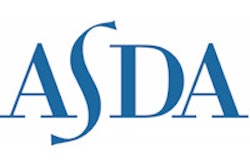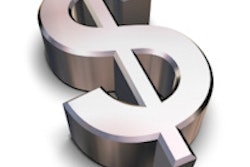
Fourth-year dental student Timothy Moriarty will soon begin working in one of the world's best-paid professions, but initially he expects to depend on his fiancée's income to make ends meet. "Basically we're going to keep living like students," he said.
That's because Moriarty plans to spend his first few years working at a clinic that serves the underserved. And he considers himself lucky. Most of his peers, as much as they would like to use their dental skills to help those in dire need, feel they have no choice but to head for private practices that cater to the middle and upper class, he said.
The culprit? The crushing debt they face upon graduation.
The latest Survey of Dental Graduates by the ADA found that the average total debt of a graduating student in 2007 had soared 39% to $169,902, up from $121,976 just four years earlier. (The survey was sent to 4,842 graduates. Of these, 3,245 responded, and the polltakers estimated there was no statistical difference between them and the total number of graduates.)
“We have to do something so more dentists can serve the underserved.”
— Timothy Moriarty
"It's really reflective of the increasing cost of providing dental education and the greater burden that students are taking," said Anne Wells, Ed.D., associate executive director of the American Dental Education Association.
Tuition and other costs of getting a dental education have also increased. When room and board are added together with books, healthcare, tuition, other fees, and miscellaneous expenses, four years at a private dental school ran $199,952 in 2007. At a public school the cost was $107,368, the survey found.
That was a 45% increase over the 2003 cost. Household income increased only 20% during those four years, according to U.S. Census figures, while dentists' incomes have risen about 24%, according to another ADA survey. So most students have had no choice but to borrow more money than previous generations of dental students.
Why so expensive?
To account for the increasing cost of dental education, Wells cited the broader trend toward increasing costs of higher education in the United States and expensive new technologies. She mentioned new virtual reality equipment as an example of technology in which some schools are investing.
Experts have debated why college costs in general are increasing faster than the rate of inflation. Ronald Ehrenberg, director of the Cornell Higher Education Research Institute, points to several factors. Structures of college governance make trustees more responsive to faculty and administrators than to students, he said. And colleges prefer to compete for high achieving students by improving facilities and services rather than cutting costs, he wrote. He also cited regulatory pressures that make building new facilities more expensive.
Others have blamed the availability of loan money in a kind of vicious cycle, with colleges charging more because they know students can pay more.
Also, state support has faltered in recent years. "It has really accelerated with the recession," said Wells. "As states look at efficiently allocating tax dollars, there seems to be a trend toward reducing the allocation that goes to higher education."
Unlike leaders of some organizations which have protested fee increases, Moriarty, president of the American Student Dental Association (ASDA) and a fourth-year student at the University of Connecticut, thinks the hikes are justified.
"It seems like they set tuition as low as they can," he said. He pointed out that the increasing cost of health care also pays a role, since dental schools often operate clinics for the underserved at a loss.
Options limited
Whatever the reasons for the increasing costs, the debt is affecting not only dentists but public health, said Moriarty. "A lot of students are interested in public service, but now they can't afford it."
The increased debt also helps explain why dentists tend to congregate in affluent parts of the country, leaving a shortage in inner cities and rural areas. And it helps explain why many dentists are emphasizing cosmetics even as the nation's poor suffer -- and sometimes even die -- from untreated oral diseases.
"There is concern that practitioners won't to be able to go into areas where they are most needed," said Wells. Teaching and research suffers from the problem of student debt as well, she added. "One of the reasons that students say they are not going to go into academia is that they can make so much more in private practice."
An ADA Survey of New Dentists found that fewer could afford to become sole practitioners right out of school. In 2008, 33.8% of dentists who had graduated in the past decade were sole practitioners. The same survey in 2006 found that 43.7% were sole practitioners.
A majority of participants in the 2008 survey said their debt affected their practice options. Of these, more than 90% said they couldn't afford to start their own practice or purchase a practice, and a majority had chosen associate or employee positions instead.
And the proportions affected have increased over the years. Of dentists who graduated from 1998 to 2001, 88.7% couldn't afford to start their own practice. By 2005-2007 that figure had climbed to 93.4%.
What to do
The federal government has tried to address the problem partly by offering loan assistance through the National Health Services Corps (NHSC). In June, U.S. Health and Human Services Secretary Kathleen Sebelius announced that her department would use $200 million from the stimulus package to double the size of the corps. But the $50,000 it pays per dentist still leaves many with a lot of debt. "It's a drop in the bucket," said Wells.
And many states, facing budget deficits, have cut back on their own similar programs.
The government also provides loans and loan guarantees to help with the cost of dental educations. Currently, Stafford Loans are available at a rate of 6.8%, up to $20,500 per year, and interest payments can be deferred until six months after graduation. After that the government backs additional loans from private lenders at 8.5%, with interest payments starting immediately.
ASDA is pushing the federal government to lower these rates. "With the current interest rates, it's almost impossible not to go into private practice," said Moriarty.
Moriarty said dental students have an excellent record of repaying their debts. "The banks would still be making a significant amount of money," he said.
And, he argues, society would benefit. "Most dentists who have paid back their student debt are giving back to the community some way," he said.



















